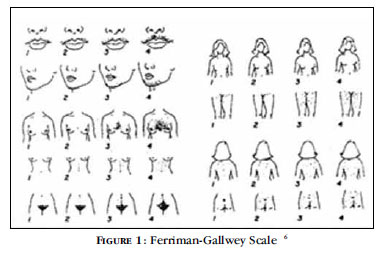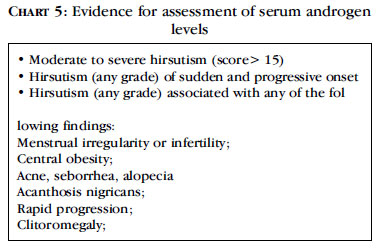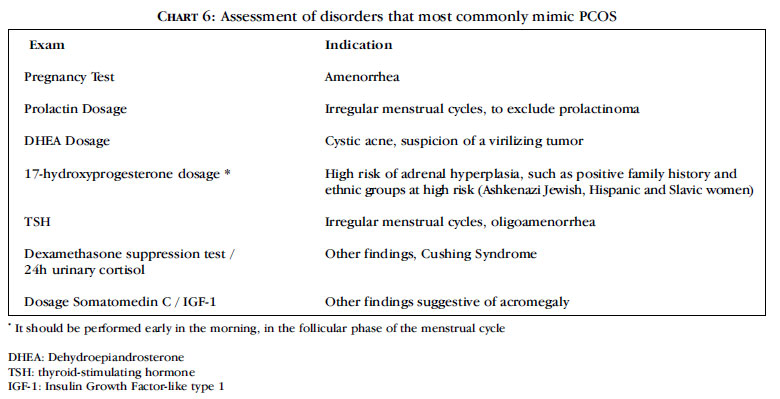Polycystic ovary syndrome (POS) is one of the most common endocrine abnormalities affecting women of reproductive age. It is a cause of significant social embarrassment and emotional distress. The pathogenesis of the disease is not yet fully understood, but it is thought to be a complex multigenic disorder, including abnormalities in the hypothalamic-pituitary axis, steroidogenesis, and insulin resistance. The main diagnostic findings of the syndrome are: hyperandrogenism, chronic anovulation and polycystic ovarian morphology seen on ultrasound. Hyperandrogenism is generally manifested as hirsutism, acne, seborrhea, androgenic alopecia and, in severe cases, signs of virilization. Treatment may improve the clinical manifestations of excess androgen production, normalize menses and ameliorate metabolic syndrome and cardiovascular complications. This article reviews the diagnosis, clinical manifestations, metabolic complications, and treatment of the syndrome. Early diagnosis and the consequent early treatment may prevent metabolic complications and emotional distress that negatively impact the patients' quality of life.
Acanthosis nigricans; Acne vulgaris; Alopecia; Hyperandrogenism; Polycystic ovary syndrome









